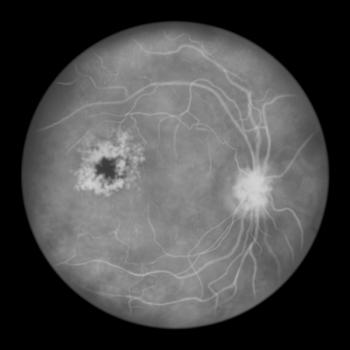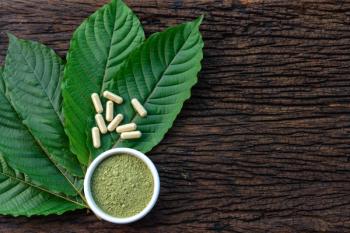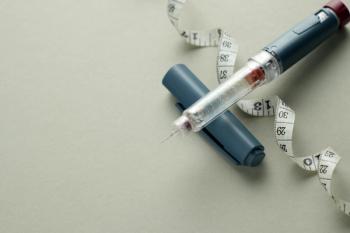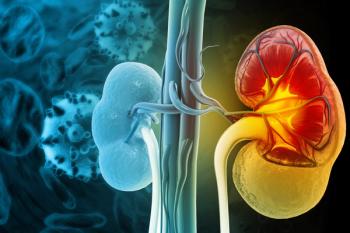
Albuterol/Budesonide Reduces Overall Use of Exacerbation-Related Rescue Inhalations in Mild Asthma
Key Takeaways
- Albuterol/budesonide significantly reduces severe asthma exacerbation risk compared to albuterol alone, as shown in the BATURA trial.
- The combination therapy resulted in a lower mean annualized dose of systemic glucocorticoids, supporting updated US prescribing information.
The findings from the BATURA clinical trial were presented at the 2025 ACAAI Annual Scientific Meeting.
Albuterol/budesonide (Airsupra; AstraZeneca) compared with albuterol alone reduced the overall use of exacerbation-related rescue inhalations among patients with mild asthma, according to research presented at the 2025 American College of Allergy, Asthma & Immunology (ACAAI) Annual Scientific Meeting. The findings reaffirm previous evidence that demonstrates albuterol/budesonide’s efficacy in patients with mild asthma.1,2
Albuterol/budesonide, formerly known as PT027, is a first-in-class short-acting β-agonists (SABA)/inhaled corticosteroid (ICS) rescue treatment for asthma that is taken as needed. It is an inhaled, fixed-dose combination rescue medication that is currently FDA approved for the treatment or prevention of asthma-related symptoms and to prevent sudden severe breathing problems—such as asthma attacks or exacerbations—in patients aged 18 years and older. According to the manufacturer, albuterol/budesonide’s initial approval was based on results from the phase 3 MANDALA (NCT03769090) and DENALI trials (NCT03847896).2
Albuterol/Budesonide in Mild Asthma: Insights from the Phase3b BATURA Clinical Trial
The findings presented at the ACAAI 2025 Annual Scientific Meeting are from the BATURA trial (NCT05505734)3, a US-based, randomized, double-blind, parallel-group phase 3b clinical trial that compared the efficacy and safety of inhaled albuterol/budesonide (180 mcg/160 mcg) as an as-needed rescue medication in response to symptoms compared with as-needed inhaled albuterol (180 mcg) for up to 12 months. Patients with asthma aged 12 years and older with intermittent or mild persistent asthma were recruited and randomly assigned to the albuterol/budesonide (n = 1209) or albuterol (n = 1212) group. Prior to enrollment, patients were receiving as-needed treatment with SABA-alone or SABA plus low-dose ICS or leukotriene modifiers (SABA + maintenance).1-3
The trial’s primary end point was the time to first severe asthma exacerbation during the study period, which was defined as a worsening of symptoms that result in 3 or more days of systemic corticosteroid use, an emergency department visit, urgent care visit, asthma-related hospitalization, or death. Secondary end points included annualized severe exacerbation rate and annualized total systemic corticosteroid dose.2,3
The data show that 72 and 127 patients in the albuterol/budesonide and albuterol groups, respectively, experienced a severe exacerbation, with 83 and 156 severe exacerbations in each group. Rescue use 15 days before an exacerbation was above study daily average and declined to daily average over the subsequent 5 to 6 days postsystemic steroid initiation for severe exacerbation treatment. Numerically, less albuterol/budesonide compared with albuterol was used in the 2 weeks prior to and following an exacerbation.1
Study Findings
The results presented at the ACAAI 2025 Annual Scientific Meeting findings support prior BATURA findings, which showed that albuterol/budesonide had significantly reduced the risk of a severe exacerbation by approximately 46% (HR, 0.54; 95% CI, 0.40–0.72; P < .001) when compared with albuterol. A severe exacerbation occurred in approximately 5.1% and 9.1% of those in the albuterol/budesonide and albuterol groups, respectively, in the on-treatment efficacy population (HR, 0.53; 95% CI, 0.39–0.73), and in 5.3% and 9.4% in the intention-to-treat population (HR, 0.54; 95% CI, 0.40–0.73; P < .001 for both comparisons).2
Additionally, the mean annualized total dose of systemic glucocorticoids was lower in the albuterol/budesonide group (23.2 mg/year) compared with albuterol (61.9 mg/year). These data supported the updated US prescribing information for albuterol/budesonide to reflect the statistically significant reduction in severe exacerbation risk in patients with mild asthma.2
Future Directions for Research
The investigators wrote that future studies will be needed to investigate whether the reduction in rescue therapy use seen with albuterol/budesonide compared with albuterol surrounding an exacerbation is related to reduced patient-perceived symptoms and whether etiologic nongenomic and/or genomic mechanisms can be identified. Additionally, identifying whether a similar pattern of rescue therapy use for albuterol/budesonide compared with albuterol exists in younger patients, such as children and adolescents, during the days before and after asthma exacerbation.1
REFERENCES
1. Skolnik N, Cardet J, Panettieri R, et al. Use of as-needed albuterol–budesonide versus albuterol before and after a severe exacerbation: batura post-hoc analysis. Ann Allergy Asthma Immunol. 2025;135(5, Supplement 1):S50–S51. doi:10.1016/j.anai.2025.08.158
2. McGovern G. Albuterol/Budesonide Label Updated to Include Clinically Meaningful Evidence From BATURA Study. Pharmacy Times. October 1, 2025. Accessed November 20, 2025. https://www.pharmacytimes.com/view/albuterol-budesonide-label-updated-to-include-clinically-meaningful-evidence-from-batura-study
3. A Comparison of PT027 vs PT007 Used as Needed in Participants With Asthma. Clinical Trials.gov identifier: NCT05505734. Updated August 3, 2025. Accessed November 20, 2025. https://clinicaltrials.gov/study/NCT05505734
Newsletter
Stay informed on drug updates, treatment guidelines, and pharmacy practice trends—subscribe to Pharmacy Times for weekly clinical insights.












































































































































































































